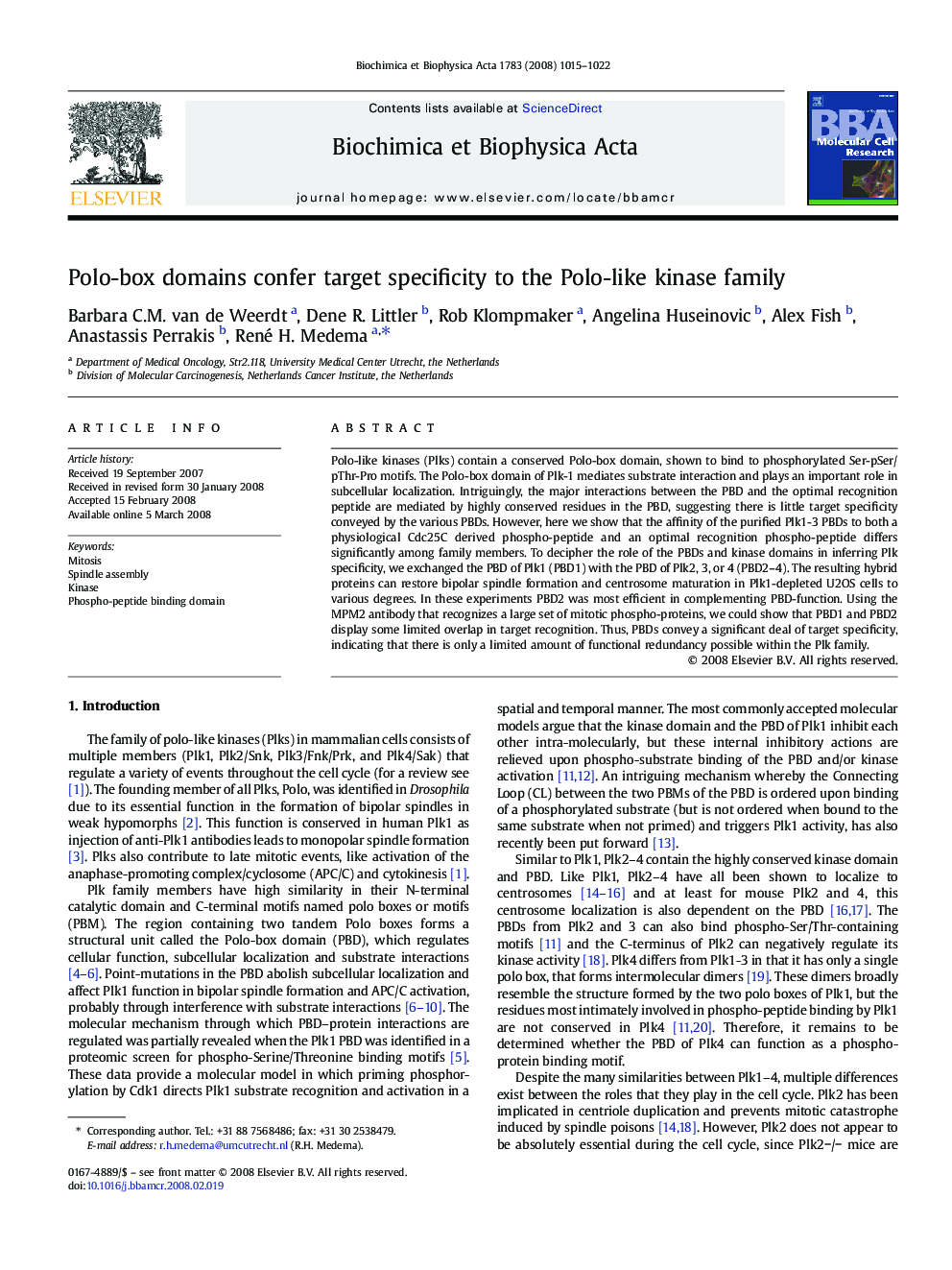| Article ID | Journal | Published Year | Pages | File Type |
|---|---|---|---|---|
| 10802970 | Biochimica et Biophysica Acta (BBA) - Molecular Cell Research | 2008 | 8 Pages |
Abstract
Polo-like kinases (Plks) contain a conserved Polo-box domain, shown to bind to phosphorylated Ser-pSer/pThr-Pro motifs. The Polo-box domain of Plk-1 mediates substrate interaction and plays an important role in subcellular localization. Intriguingly, the major interactions between the PBD and the optimal recognition peptide are mediated by highly conserved residues in the PBD, suggesting there is little target specificity conveyed by the various PBDs. However, here we show that the affinity of the purified Plk1-3 PBDs to both a physiological Cdc25C derived phospho-peptide and an optimal recognition phospho-peptide differs significantly among family members. To decipher the role of the PBDs and kinase domains in inferring Plk specificity, we exchanged the PBD of Plk1 (PBD1) with the PBD of Plk2, 3, or 4 (PBD2-4). The resulting hybrid proteins can restore bipolar spindle formation and centrosome maturation in Plk1-depleted U2OS cells to various degrees. In these experiments PBD2 was most efficient in complementing PBD-function. Using the MPM2 antibody that recognizes a large set of mitotic phospho-proteins, we could show that PBD1 and PBD2 display some limited overlap in target recognition. Thus, PBDs convey a significant deal of target specificity, indicating that there is only a limited amount of functional redundancy possible within the Plk family.
Keywords
Related Topics
Life Sciences
Biochemistry, Genetics and Molecular Biology
Biochemistry
Authors
Barbara C.M. van de Weerdt, Dene R. Littler, Rob Klompmaker, Angelina Huseinovic, Alex Fish, Anastassis Perrakis, René H. Medema,
